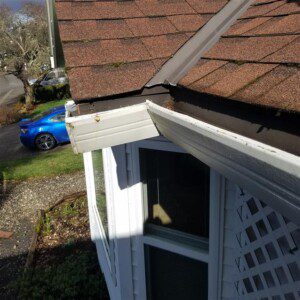
 Debris
Debris
One of the most common problems is debris in the gutters. Much of the debris that falls onto the roof can get swept into gutters by water and wind. This debris can prevent water from draining, and can foster mold and insects. Manual removal can be challenging and dangerous, especially for the elderly. Gutter cleaning should be done regularly, after wind and storm events that bring down debris from trees, and prior to the rainy season. In some areas, multiple cleanings may be needed as debris continues to fall through the winter from evergreens, like conifers.
There are gutter guards available that can help prevent much of the debris from entering gutters while allowing water collection. However, these guards must be designed and installed correctly. Some guards are designed for broadleaf debris and can be easily clogged by conifer needles. Clogged gutter guards can prevent water entering the gutter, which is as harmful as having a gutter full of debris. Even gutter guards that function well must be removable for maintenance. Smaller debris will get past them into the gutters, and moss and algae can grow in guarded gutters. Gutter guards have potential to cause roof leakage if they are installed incorrectly. For example, if guards are screwed through shingles without sealant, water may penetrate these fasteners into the sheathing and even into roof framing.
Downspout strainers are important and inexpensive components for managing debris that ends up in gutters. Mesh plugs that fit into the downspout openings in gutters, they prevent most particles from entering the downspouts. Debris will accumulate around them and can be easily removed, while water drains through. Preventing debris in the downspouts is very important. Downspouts often make sharp turns and debris lodged in them may require disassembly to remove. Worse, if debris lodges in and obstructs the below-ground downspout drain lines, excavation may be necessary to repair the system.

 Gutter Slope
Gutter Slope
Another common problem related to installation is improper slope. Gutters must have a low and positive slope towards downspouts. This allows water and debris to flow toward the openings and leaves the gutters dry afterward. If they are sloped toward a closed end, water and debris will accumulate there. Gutters with trapped water become heavier and strain at the attachments to the home. Standing water can breed mosquitos and mold and attract pests. Debris accumulated at low points can block future drainage. Standing water will corrode the gutters and eventually erode sealant, causing leakage. In heavy rains, improper slope can cause gutters to fill with water and spill over.
The best time to ensure proper gutter slope is at installation. Downspout locations should be planned and gutters slope up from them to the closed ends. This is especially important with hip and valley roofs, where gutters often wrap around multiple eave aspects to downspouts. The gutters should maintain a low and consistent slope up while turning corners, which is not easy. These wrap around gutters are frequently found with low points away from downspouts.
Correcting improper gutter slope is not a simple endeavor. Since most gutters are attached by long nails driven into rafter tails, removing them to reposition gutters is difficult, takes time, and has potential to damage the gutters, fascia and rafter tails. Adding downspouts at low points may be a better solution, but they typically drop into a below-ground downspout drain line. Adding additional downspouts to an existing drain line would require excavation and may be challenging due to driveways, walkways and landscaping.
Downspout Termination
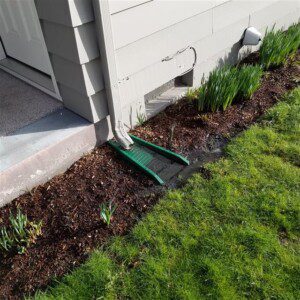
Problems with any part of the gutter system can allow water near the foundation. Even fully functional gutter and downspout systems are frequently found emptying into flower beds along the foundation. If they do not empty into a drain line, they should terminate at least five or six feet away from the home, where the slope causes water to drain away.
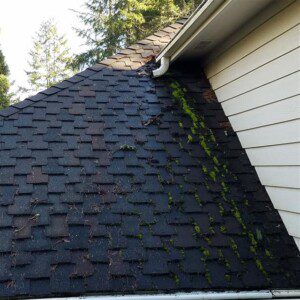
Many of the problems discussed here are common, both in new construction and with older homes. Gutters are generally not easy or safe to examine, so a thorough home inspection by a certified home inspector who climbs ladders and walks on roofs is the best way to identify gutter system problems.

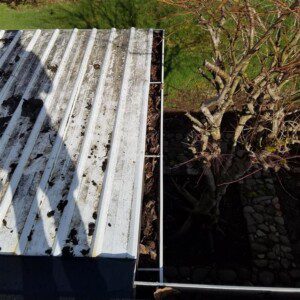 Debris
Debris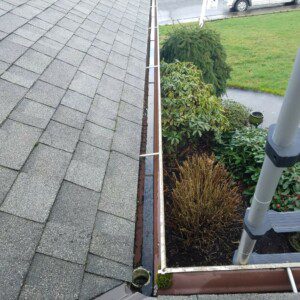
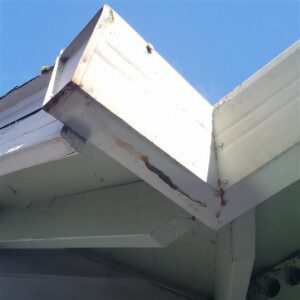 Gutter Slope
Gutter Slope